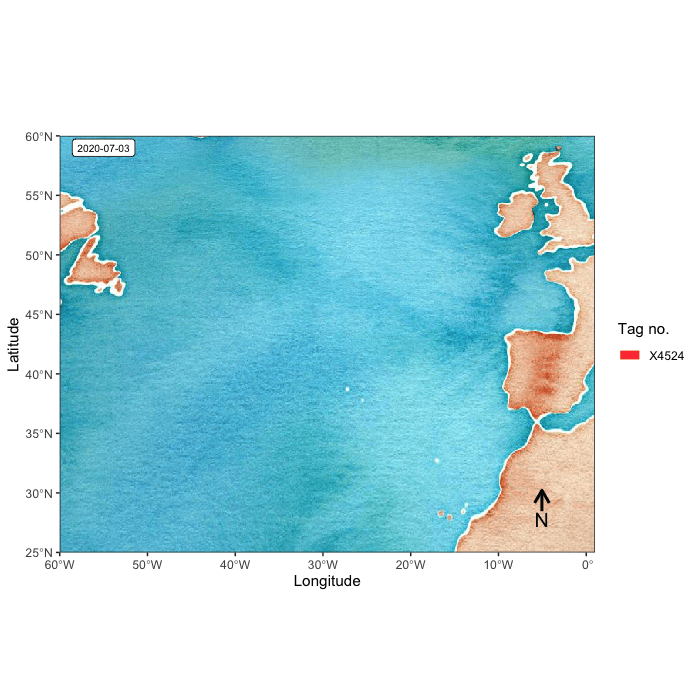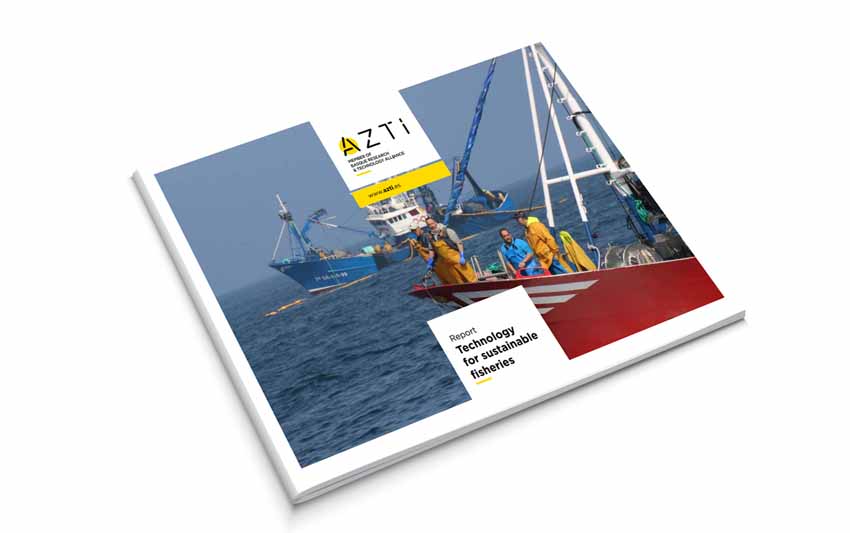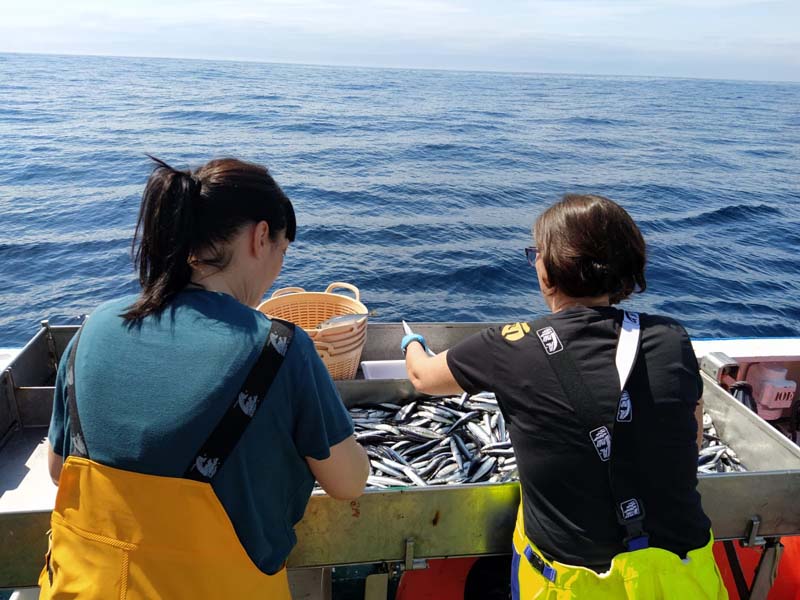AZTI records for the first time the migratory route of an albacore during winter
Últimas noticias
Una mirada LGTBIQ+ al reino animal
Circular Economy in Action: Valorisation of By-products through Projects like PRIMA NEWFEED
Strategic Perspectives: Highlights from the Food4Future World Summit for Business Leaders
- Using electronic tags, the technology centre has obtained the first scientific evidence of the complete migration of juvenile albacore between two consecutive years, providing information on their overwintering destination.
- The information collected provides fishery-independent data on the biology and ecology of the species and contributes to improved fisheries management.
- The monitoring is part of the current International Commission for the Conservation of Atlantic Tunas (ICCAT) tagging programme for Atlantic albacore, funded by the Commission and the European Union.
Sukarrieta, 4 October 2022– Several months ago, the French fishing boat Vincent Galland caught a tuna fish in the south of Ireland. The fish measured 85 cm, weighed 11.6 kilos… and held a surprise. In its entrails, it hid an electronic tag, a small tracking device, which had been placed two years earlier by AZTI marine researcher Iñigo Onandia on board his father Román’s fishing boat, 12 miles north Bilbao. The specimen was then 70 centimetres long and weighed around 7 kilograms.

Once recovered, the tag was sent to the AZTI laboratories, where a new surprise awaited the researchers: for the first time, the migratory route of a juvenile albacore had been recorded for two consecutive years in the North Atlantic.
“This is the first case in which it has been possible to introduce an electronic tag in an Atlantic albacore, which has been recovered more than a year later. This has allowed us to get our hands on unknown information about this species. We knew We knew that it abandoned the Bay of Biscay in autumn to return again the following spring., but not where it hibernated”, explains Iñigo Onandia, an expert in sustainable fisheries management at AZTI.
Specifically, the electronic tag used has technology that makes it possible to measure variables such as the depth at which the fish is submerged, the temperature (of the water and inside the tuna) and the intensity of the light. In this way, the technology centre’s experts can infer the migratory route of the fish.
The data collected show, for example, the successive visits to the Bay of Biscay during consecutive summers by juvenile albacore tuna and show their hibernation destination, which contributes to increasing scientific knowledge about the life cycle of albacore tuna in the North Atlantic.
“During the winter, albacore visits Atlantic areas far to the west, where they live at considerable depths (up to several hundred metres, where they are fished with longline gear), while during their visit to the Bay of Biscay, they are distributed near the surface, where they are caught with live bait, trolling and pelagic trawling gear”, adds the AZTI researcher.
Improving fisheries management
This tag recovery is part of the current International Commission for the Conservation of Atlantic Tunas (ICCAT) tagging programme for Atlantic albacore tuna, which has been funded by the Commission and the European Union (Grant Agreement – Strengthening the scientific basis for decision-making in ICCAT).
Within the framework of this initiative, AZTI is leading, in collaboration with other research institutions, the electronic tagging of tuna. To this end, it also relies on the necessary participation of fishermen, who send the centre the electronic tags recovered during fishing campaigns.
This traceability technology is surgically implanted in the peritoneal cavity of the fish and makes it possible to carry out detailed monitoring of the environment in which it is found and an estimate of the trajectory it has travelled.
In this way, centres such as AZTI obtain data independent of fishing on the biology and ecology of the species to contribute to improving fisheries management.
“The precise definition of the population structure and migrations is important to reduce the uncertainty in the stock assessment and therefore improves the scientific management advice . For this reason, methodologies such as tagging and this recapture of specimens are of great value in improving scientific knowledge of species such as albacore tuna, which are so valuable for the Basque Country’s fishing economy,” concludes Onandia.







